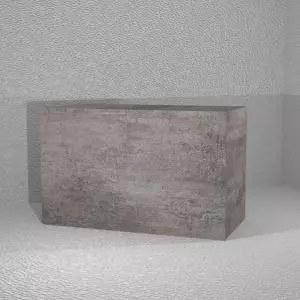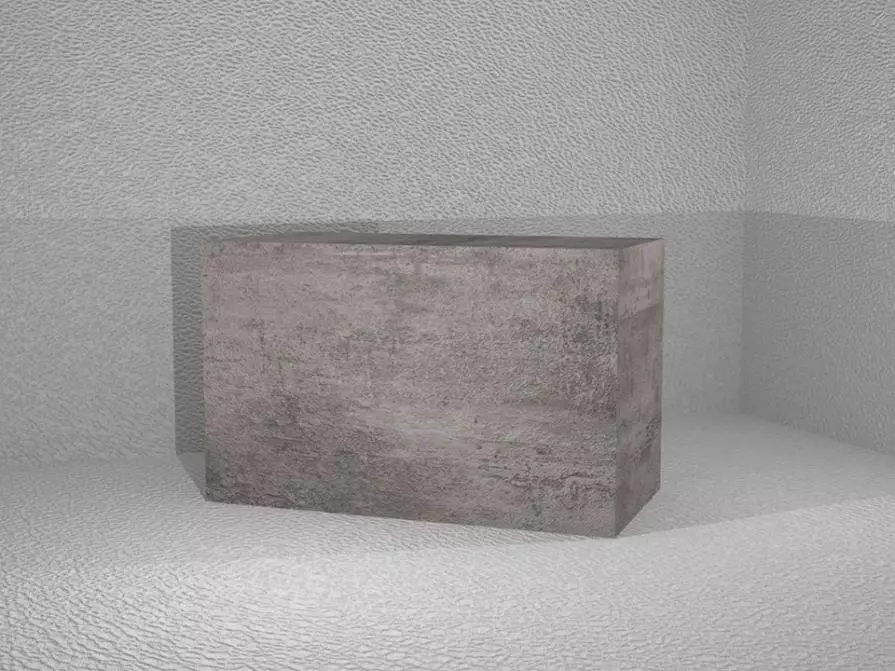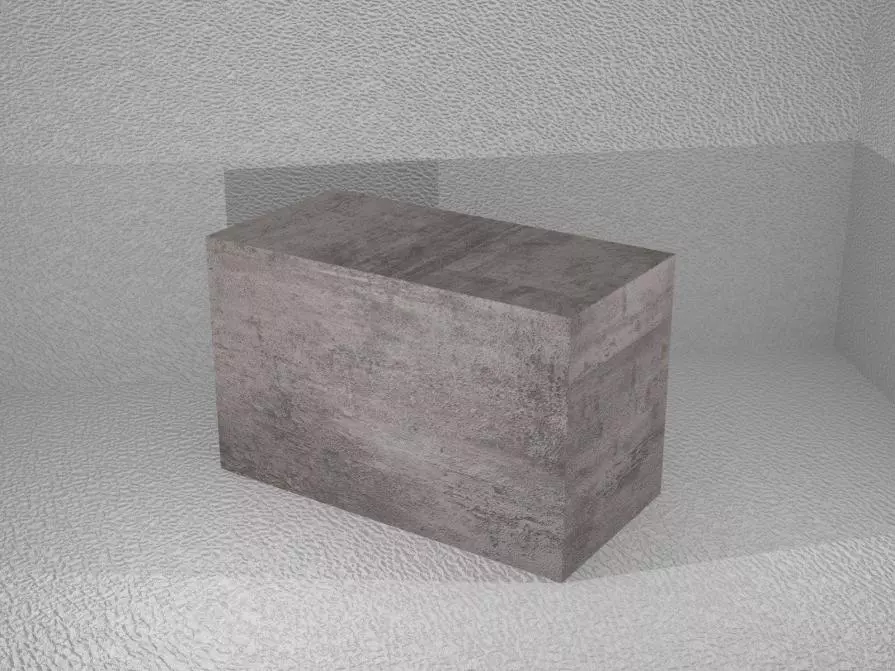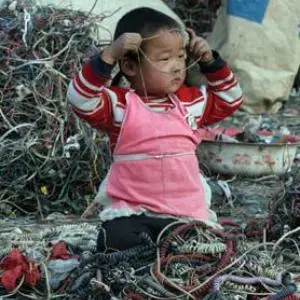
Core

Waste

I imagined a world in which the Earth can still breathe and is not threatened by pollution. We are composed of many different types of cells just like animals and plants. The matter is never created, nor destroyed, it just changes, evolves, due to the multiple changes of state of the matter itself. According to the physical laws of classical mechanics, which originates from the fundamental postulate of Antoine Lavoisier and already anticipated by Russian polymath, scientist and writer Mikhail Lomonosov, "Nothing is lost, nothing is created, everything is transformed.” Bearing in mind this very important law, I thought about the possible regeneration of what for us is one of the planet's most serious wounds, that is, pollution from waste (plastic, glass, paper, metals, textiles, etc.). I researched the existing machines on the market capable of processing the waste, that could be vital in particular areas of the world where people are forced by poverty to live in landfills, trying to sell some garbage for few cents: Nairobi -Kenya, Jardim Gramacho in Rio de Janeiro - Brazil, Payatas and Quezon City - Philippines, Mazatlan - Mexico, Ulingan in Manila - Philippines, Smokey Mountain in Manila – Philippines, Dharavi in Mumbai - India, Bantar Gebang in Jakarta - Indonesia, Chulucanas in Piura - Peru and many others, such as Guiyu tech dump in the southeast of China, Guangdong province, in the Chaoyang district. I thought to the poverty, the livelihood, and the shelter these working people need. I've been thinking about what we could get from these landfills, bringing on site these machines to separate and shred different types of waste and convert them in different types of recycled blocks that could be used as an alternative building material. This could be employed locally for construction, infrastructure, and development projects, which would lead to jobs creation through local business development. This would not only be the short-term solution to keep these people away from their toxic shelters, but could represent the long-term solution to help those regions re-flourish. I thought of this project, not to discover something that already exists, but to give a new chance of a decent life to those who live in poverty and as developed countries, who send tons of waste in Third World countries, to have a eco-friendly way of disposal and by to profit, but at the cost of helping others. Children of these slums, they need to believe in a future of happiness, not a stinking life, with food made with the breakdown of waste taken from the garbage or get warm by burning car tires or cartons breathing so dioxin and other toxic gases . In 2050 it is estimated that plastic will cover most of the earth's surface, considering seas and oceans. Even so, the food processor machines and creators of plastic filaments or mortar "cement" should really be considered. One can not believe that America does not use it, but it sends all the fast food scraps including scrap of farms and feathers and carcasses to underdeveloped countries, without thinking that these materials could be reused to create a fuel or for building modules housing, I' am thinking of the use of the timber, the plastic or cellulose. The idea to patent a food processor machine, is the concept of removing these people, including children from the discard selection, the body remove them from pollution and disease, however, to turn this garbage into a 'no other source of livelihood, that building and then to create a healthier working. This junk course is treated in such a way as to be insulator (heat and cold), durable, odorless and non-toxic. Many companies are already dealing with waste disposal and many scientists are studying a way to draw heat from the garbage and renewable sources. The need to work and earn a living is inherent in these inhabitants of landfills, often they take drugs just to work in conditions of great stress, with the glue of the shoes as children do in Nairobi or with kerosene, the fuel of the aircrafts, as they do many of the inhabitants of other landfills in the world.
Waste
Bearing in mind this very important law, I thought about the possible regeneration of what for us is one of the planet's most serious wounds, that is, pollution from waste (plastic, glass, paper, metals, textiles, etc.). I researched existing machines on the market capable of processing waste, that could be vital in particular areas of the world where people are forced by poverty to live in landfills, trying to sell garbage for few cents: Nairobi (Kenya), Jardim Gramacho in Rio de Janeiro (Brazil), Payatas and Quezon City (Philippines), Mazatlan (Mexico), Ulingan in Manila (Philippines), Smokey Mountain in Manila (Philippines), Dharavi in Mumbai (India), Bantar Gebang in Jakarta (Indonesia), Chulucanas in Piura Peru) and many others, such as Guiyu tech dump in the Chaoyang district, Guangdong province, southeast of China.
I thought of the poverty, people's livelihoods, and the shelter these working people need. I've been thinking about what we could get from these landfills, bringing on site these machines to separate and shred different types of waste and convert them into different types of recycled blocks that could be used as an alternative building material. This could be employed locally for construction, infrastructure, and development projects, which would lead to jobs creation through local business development. This would not only be the short-term solution to keep these people away from their toxic shelters, but could represent the long-term solution to help those regions re-flourish.
I thought of this project, not to discover something that already exists, but to give a new chance of a decent life to those who live in poverty. We, as developed countries, who send tons of waste to third world countries, should have an eco-friendly way of disposal and still make profit, and at the same time help others. The children of these slums, need to believe in a future of happiness, not a stinking life, with food made with the breakdown of waste taken from the garbage or warming themselves by burning car tyres or cartons, or breathing in dioxin and other toxic gases.
By 2050, it is estimated that plastic will cover most of the earth's surface, if we include areas covered by seas and oceans. Even so, processor machines which breakdown plastic infot filaments or mortar 'cement' should really be considered. It's hard to believe that such machines are not widely used in the United States which sends all its fast food scraps, including scraps from farms, feathers and carcasses to underdeveloped countries, without thinking that these materials could be reused to create a fuel or for building housing modules. I am thinking of the use of the timber, plastic or cellulose. The idea to patent a similar processor machine, is tied to the idea to helping these people, including the children who are working and selecting in these dumps, the pollution and disease. The idea is to turn this garbage into another source of livelihood, that building and then to create a healthier living and working environment. This junk is treated in such a way that it can be used as a heat insulator (heat and cold), durable, odourless and non-toxic.
Many companies are already dealing with waste disposal and many scientists are studying a way to draw heat from the garbage and renewable sources. The need to work and earn a living is inherent in these inhabitants of landfills, often they take drugs just to work in conditions of great stress, with the glue taken from old shoes, as children do in Nairobi, or with kerosene, the fuel of the aircrafts, as do many of the inhabitants of other landfills in the world.
 Share / Save
Share / Save





















Comments 1
Say something